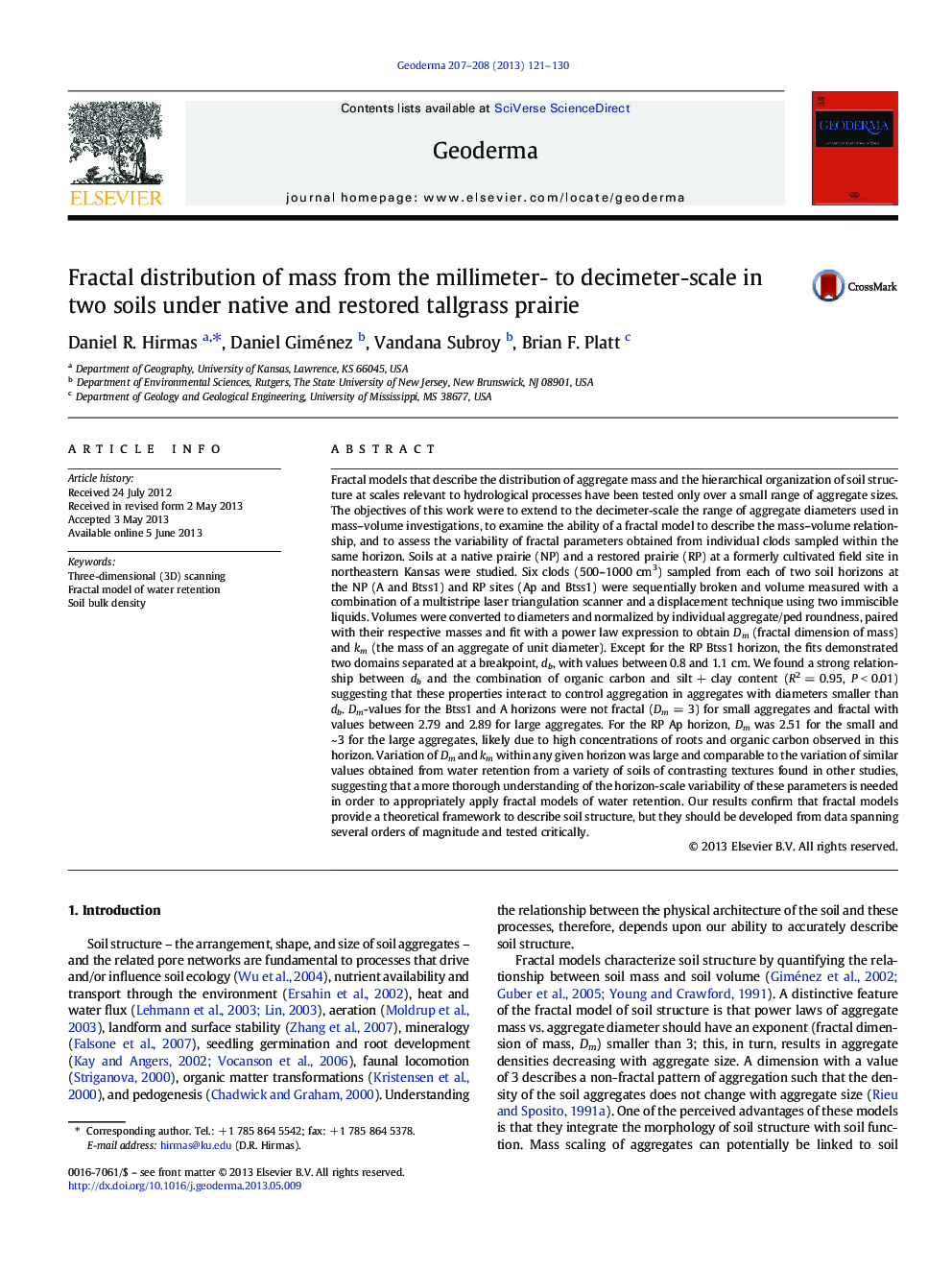| Article ID | Journal | Published Year | Pages | File Type |
|---|---|---|---|---|
| 6409159 | Geoderma | 2013 | 10 Pages |
â¢3-D scanning was used to extend the range examined in mass-volume investigations.â¢Two mass-volume fractal domains were found and consistent with previous data.â¢Breakpoints between fractal domains were correlated with organic C and clay + silt.â¢Large variation in fractal model parameters was found within horizons.
Fractal models that describe the distribution of aggregate mass and the hierarchical organization of soil structure at scales relevant to hydrological processes have been tested only over a small range of aggregate sizes. The objectives of this work were to extend to the decimeter-scale the range of aggregate diameters used in mass-volume investigations, to examine the ability of a fractal model to describe the mass-volume relationship, and to assess the variability of fractal parameters obtained from individual clods sampled within the same horizon. Soils at a native prairie (NP) and a restored prairie (RP) at a formerly cultivated field site in northeastern Kansas were studied. Six clods (500-1000 cm3) sampled from each of two soil horizons at the NP (A and Btss1) and RP sites (Ap and Btss1) were sequentially broken and volume measured with a combination of a multistripe laser triangulation scanner and a displacement technique using two immiscible liquids. Volumes were converted to diameters and normalized by individual aggregate/ped roundness, paired with their respective masses and fit with a power law expression to obtain Dm (fractal dimension of mass) and km (the mass of an aggregate of unit diameter). Except for the RP Btss1 horizon, the fits demonstrated two domains separated at a breakpoint, db, with values between 0.8 and 1.1 cm. We found a strong relationship between db and the combination of organic carbon and silt + clay content (R2 = 0.95, P < 0.01) suggesting that these properties interact to control aggregation in aggregates with diameters smaller than db. Dm-values for the Btss1 and A horizons were not fractal (Dm = 3) for small aggregates and fractal with values between 2.79 and 2.89 for large aggregates. For the RP Ap horizon, Dm was 2.51 for the small and ~ 3 for the large aggregates, likely due to high concentrations of roots and organic carbon observed in this horizon. Variation of Dm and km within any given horizon was large and comparable to the variation of similar values obtained from water retention from a variety of soils of contrasting textures found in other studies, suggesting that a more thorough understanding of the horizon-scale variability of these parameters is needed in order to appropriately apply fractal models of water retention. Our results confirm that fractal models provide a theoretical framework to describe soil structure, but they should be developed from data spanning several orders of magnitude and tested critically.
